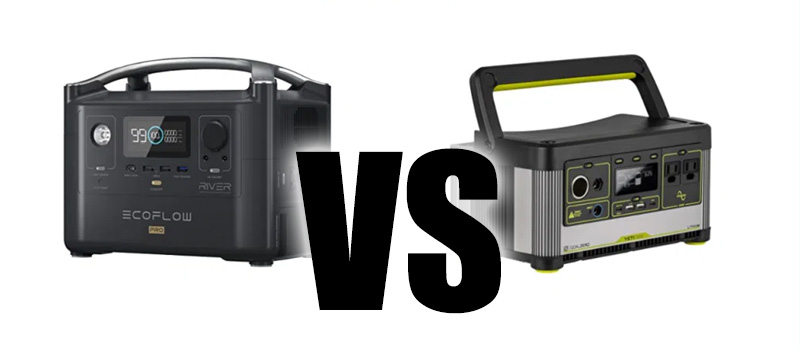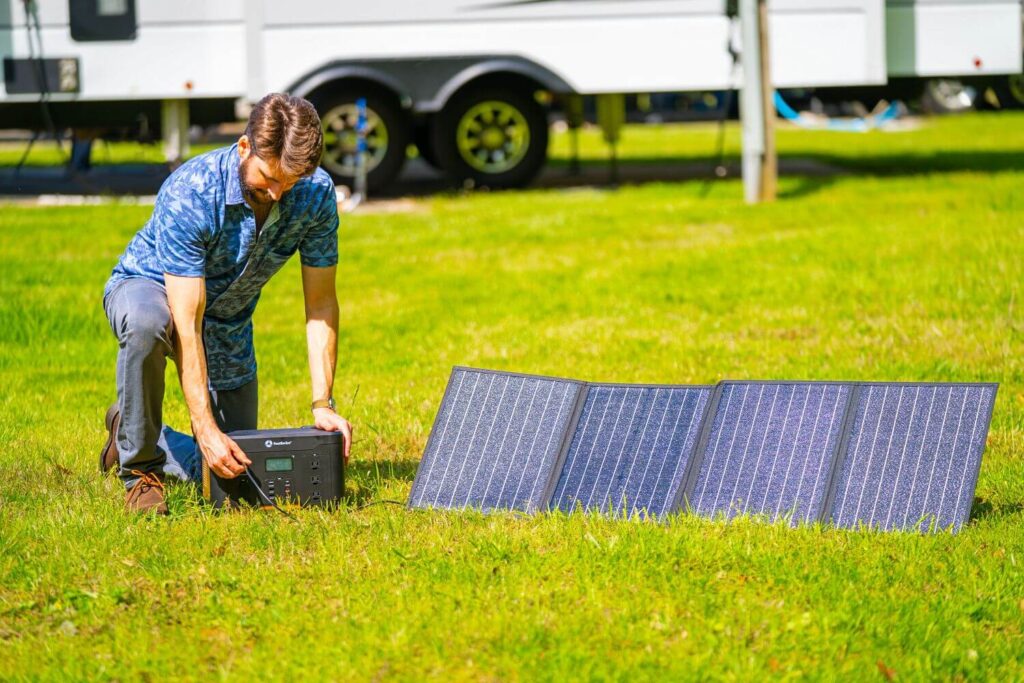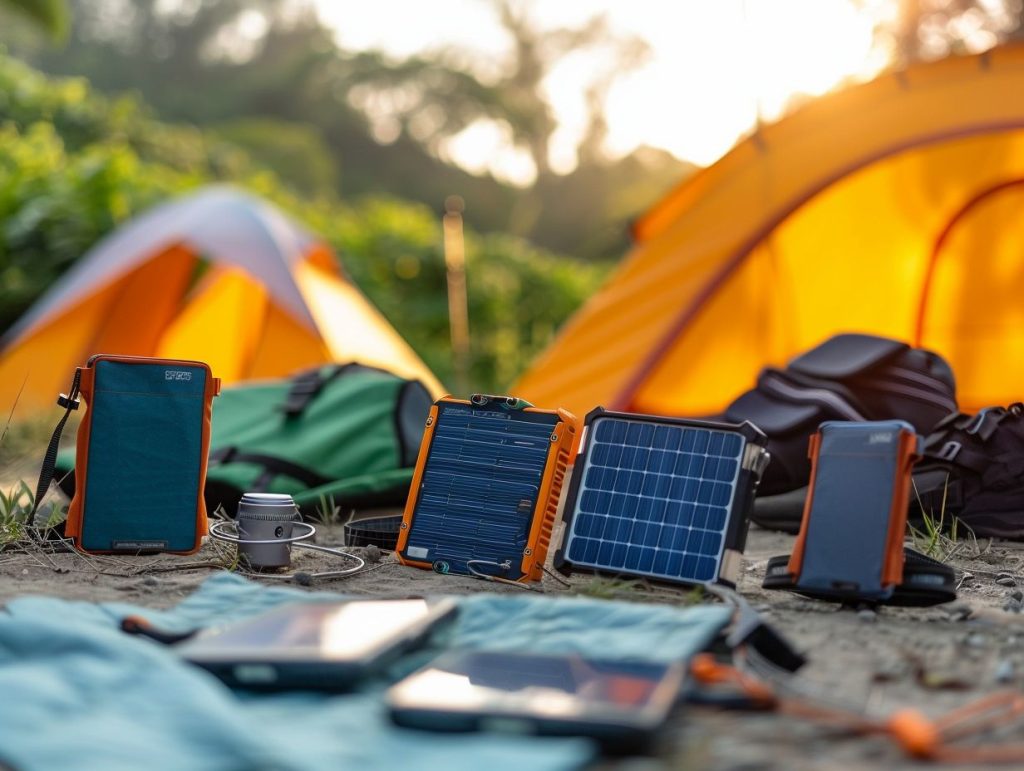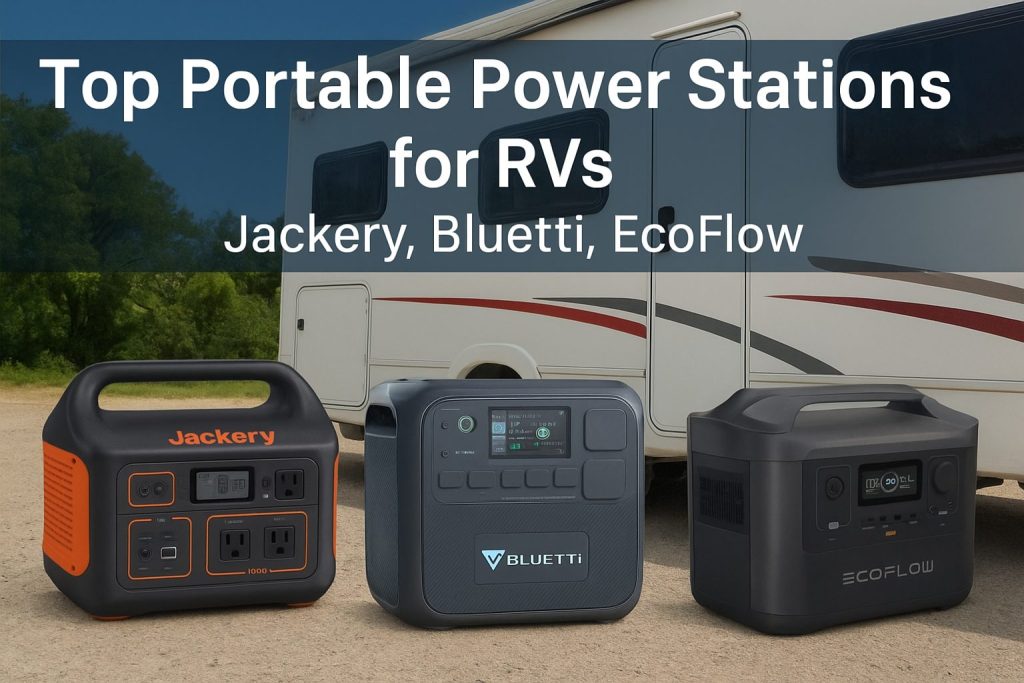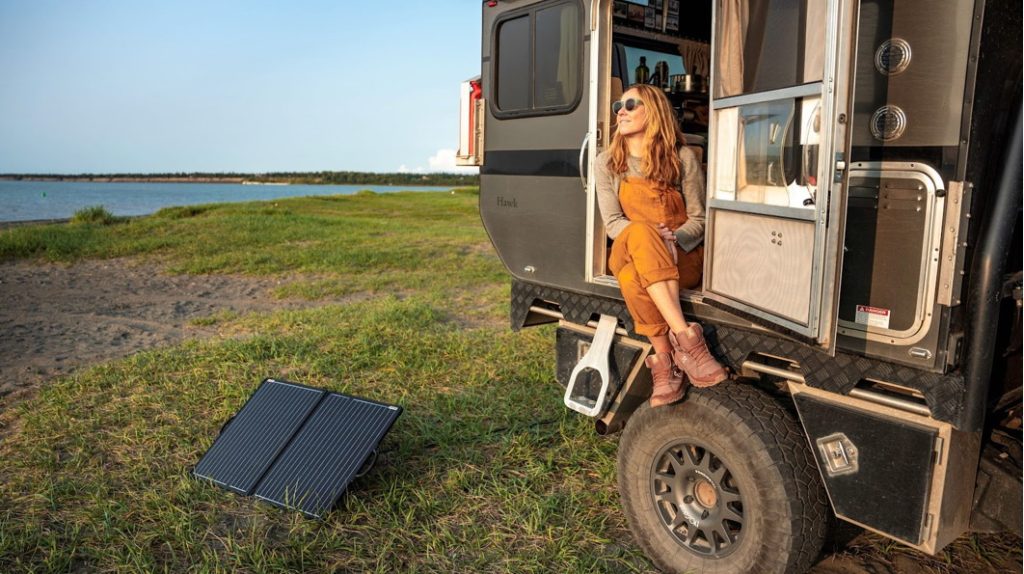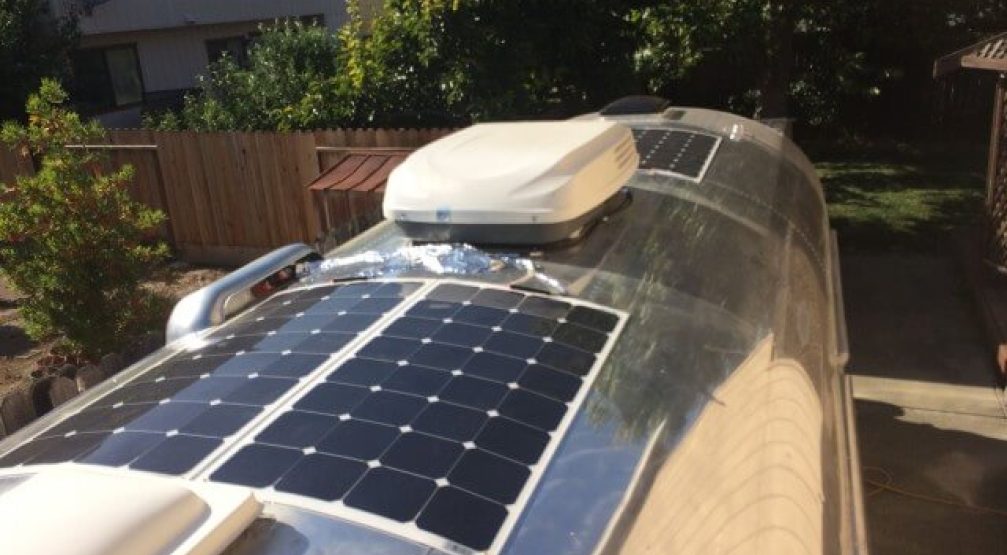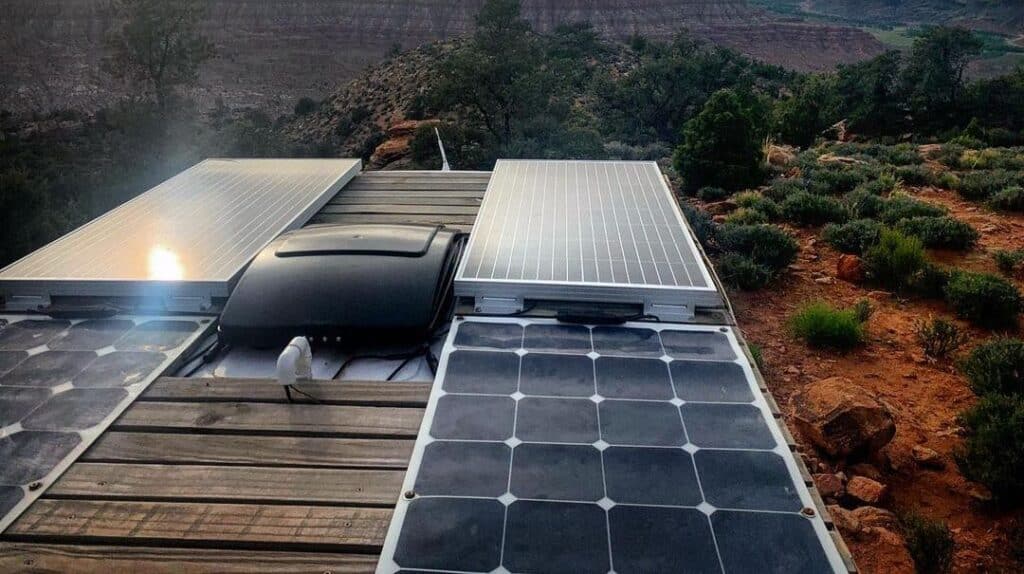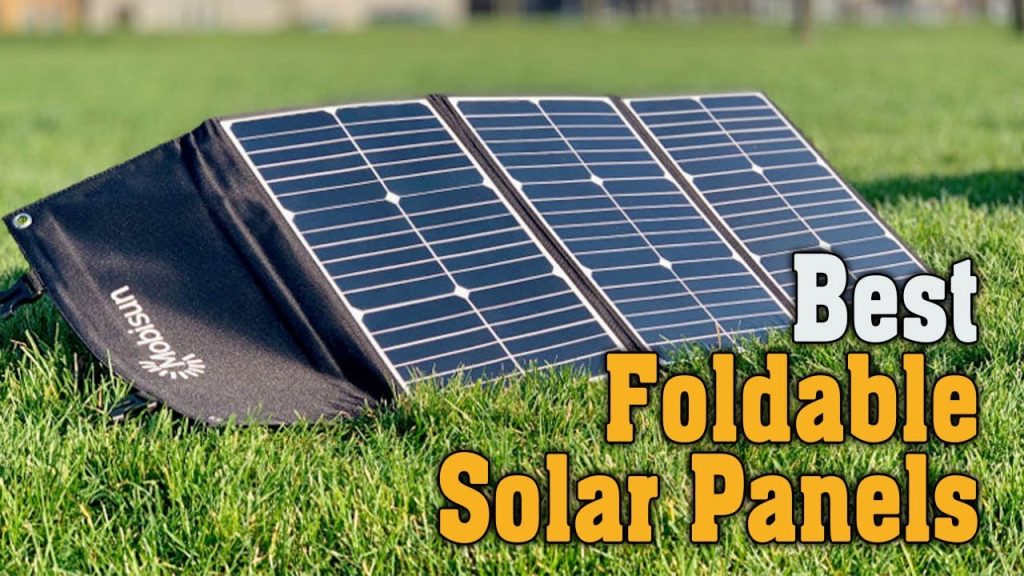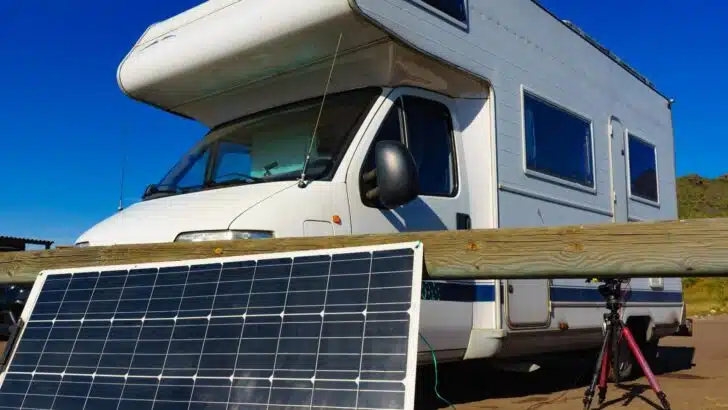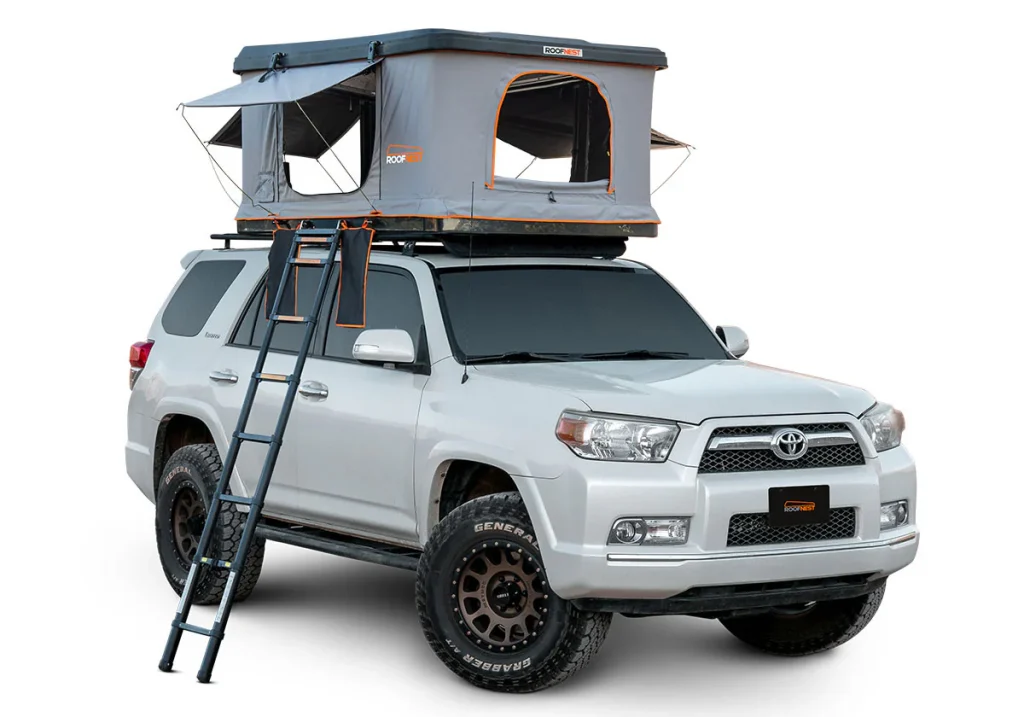In a world increasingly focused on sustainability and energy independence, solar generators have become essential for outdoor adventures, emergency backup, and off-grid living. Unlike traditional gas-powered generators, solar generators provide clean, renewable energy without noise, fumes, or ongoing fuel costs. They’re portable, eco-friendly, and versatile, making them ideal for camping, RV trips, home backup power, and even DIY solar projects.
When it comes to high-quality solar generators, two brands dominate the market: Goal Zero and EcoFlow.
-
Goal Zero, a pioneer in portable solar power, is known for its durability, reliability, and off-grid expertise.
-
EcoFlow, a newer but rapidly growing brand, stands out for its fast-charging technology, high power output, and smart features.
With so many options available, choosing the right solar generator can be overwhelming. This detailed comparison will break down the key differences between Goal Zero and EcoFlow models—covering power capacity, battery tech, charging speed, portability, and pricing—so you can make an informed decision based on your needs.
Brand Overview
Goal Zero: A Pioneer in Portable Solar Power
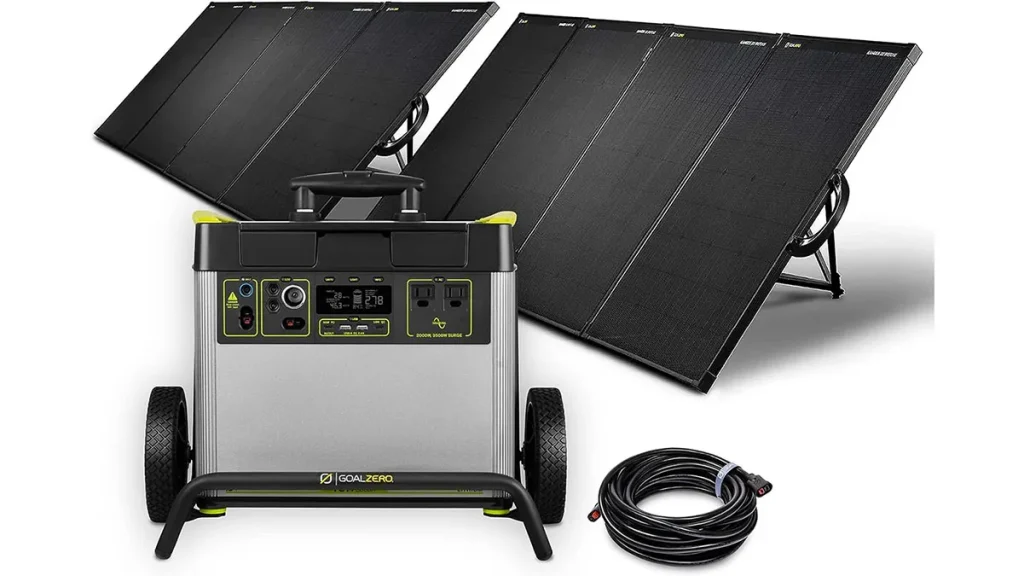
History & Reputation:
Founded in 2009, Goal Zero is one of the earliest and most trusted names in portable solar power. The company started with a mission to provide reliable, renewable energy solutions for outdoor enthusiasts and emergency preparedness. Over the years, Goal Zero has built a strong reputation for durability, simplicity, and off-grid reliability, making it a favorite among campers, adventurers, and survivalists.
Key Features:
✔ Rugged Build – Designed for outdoor use with tough, weather-resistant materials.
✔ Expandable Power – Many models (like the Yeti series) support add-on batteries for extra capacity.
✔ Solar-Ready – Compatible with Goal Zero’s own solar panels, optimized for efficient charging.
✔ User-Friendly – Simple controls with no complicated setup, ideal for beginners.
Goal Zero is best known for its Yeti power stations and Nomad solar panels, which are widely used in camping, emergency backup, and off-grid living.
EcoFlow: Innovation and High-Tech Solar Solutions
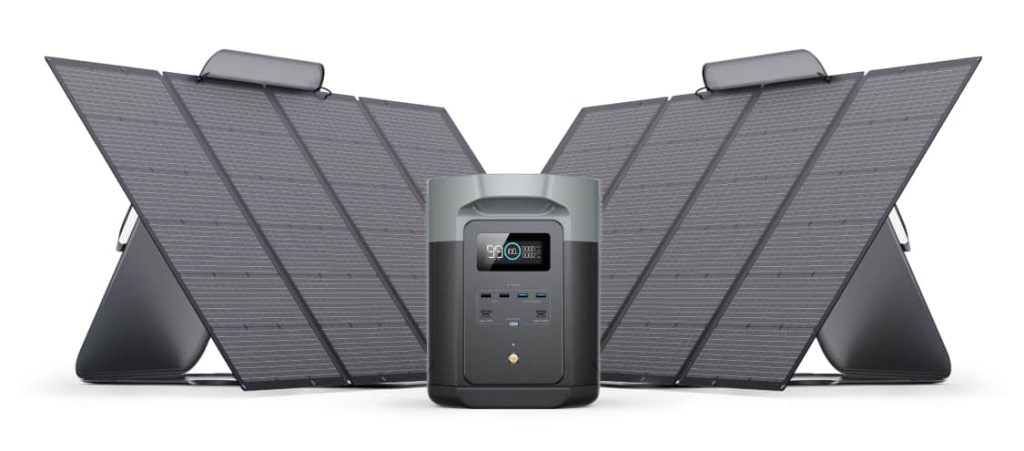
Background & Market Positioning:
EcoFlow entered the market in 2017 and quickly gained attention for its fast-charging, high-capacity power stations. Unlike traditional solar generators, EcoFlow integrates smart technology and cutting-edge battery systems to deliver faster recharge times and higher power output. The brand appeals to tech-savvy users, RV owners, and homeowners looking for efficient backup power.
Key Innovations:
✔ X-Stream Fast Charging – Some models can recharge from 0% to 80% in under an hour (via AC).
✔ LiFePO4 Batteries – Longer lifespan (3,500+ cycles) compared to standard lithium-ion.
✔ Smart App Control – Monitor and control power usage via Bluetooth/Wi-Fi.
✔ High Surge Power – Handles heavy-duty appliances like refrigerators and power tools.
EcoFlow’s Delta and River series are popular for home backup, RV trips, and professional use, thanks to their speed, scalability, and smart features.
Key Comparison Factors
When choosing between Goal Zero and EcoFlow, several critical factors come into play. Below, we break down the most important aspects to help you decide which solar generator best fits your needs.
Power Capacity & Output
Goal Zero (Yeti Series)
-
Capacity Range:
-
Entry-level: Yeti 200X (187Wh) – Good for small devices like phones, lights, and mini-fridges.
-
Mid-range: Yeti 1000X (983Wh) – Can power small appliances, CPAP machines, and tools.
-
High-capacity: Yeti 3000X (3032Wh) – Suitable for home backup, RVs, and off-grid setups.
-
-
Max Output:
-
Most models support 200W–2000W continuous output, with some offering 3500W surge.
-
Designed for steady, reliable power rather than extreme high-wattage demands.
-
EcoFlow (Delta Series)
-
Capacity Range:
-
Compact: River 2 (256Wh) – Ideal for camping and small electronics.
-
Mid-tier: Delta 2 (1024Wh) – Handles refrigerators, power tools, and medical devices.
-
Heavy-duty: Delta Pro (3600Wh) – Whole-home backup and high-energy needs.
-
-
Max Output:
-
1800W–3600W continuous, with surge power up to 7200W (Delta Pro).
-
Better for high-drain appliances like air conditioners and heavy-duty tools.
-
Winner?
-
Goal Zero for steady, reliable off-grid power.
-
EcoFlow for higher wattage and surge capabilities.
Battery Technology & Efficiency
Goal Zero
-
Battery Types:
-
Older models use standard lithium-ion (NMC).
-
Newer models (Yeti X series) feature Lithium NMC for better energy density.
-
-
Lifespan: ~500–800 cycles (to 80% capacity).
-
Efficiency: Good, but slower recharge rates compared to EcoFlow.
EcoFlow
-
Battery Types:
-
LiFePO4 (Delta 2, River 2 Pro) – 3,000+ cycles (longer lifespan).
-
NCM (Delta Pro, Delta Max) – Higher energy density but slightly shorter lifespan (~800 cycles).
-
-
Lifespan: Up to 3,500+ cycles (LiFePO4 models).
-
Efficiency: Superior due to X-Stream fast charging and better heat management.
Winner?
-
EcoFlow (especially LiFePO4 models) for longevity and faster charging.
Solar Charging Speed & Compatibility
Goal Zero
-
Solar Input Limit:
-
Yeti 1000X: 200W max solar input.
-
Yeti 3000X: 600W max solar input.
-
-
Recommended Panels: Works best with Goal Zero Nomad panels (optimized pairing).
-
Charging Time:
-
Yeti 1000X: ~9–12 hours (with 200W solar).
-
EcoFlow
-
Solar Input Limit:
-
Delta 2: 500W max solar input.
-
Delta Pro: 1600W max solar input.
-
-
X-Stream Fast Charging:
-
Can recharge 0–80% in 1–2 hours (with optimal sunlight).
-
-
Compatibility: Works with most third-party solar panels.
Winner?
-
EcoFlow for much faster solar charging and flexibility.
Portability & Design
Goal Zero
-
Weight:
-
Yeti 1000X: 38 lbs (portable but bulky).
-
Yeti 3000X: 69 lbs (requires wheels or two people to move).
-
-
Design: Rugged, outdoor-friendly, but no built-in wheels.
EcoFlow
-
Weight:
-
Delta 2: 27 lbs (lightweight for its capacity).
-
Delta Pro: 99 lbs (but includes wheeled trolley).
-
-
Design: More modern, some models have built-in handles and wheels.
Winner?
-
EcoFlow for better portability features.
-
Goal Zero for extreme ruggedness.
Expandability & Additional Features
Goal Zero
-
Expandability:
-
Yeti Link allows connecting extra batteries (e.g., Yeti 3000X + expansion tanks).
-
-
Extras:
-
Basic LCD display, no smart app.
-
EcoFlow
-
Expandability:
-
Extra Battery Connections (Delta Pro can stack up to 25kWh).
-
-
Smart Features:
-
EcoFlow App (monitor power usage, adjust settings remotely).
-
Winner?
-
EcoFlow for smart features and extreme expandability.
Price & Value for Money
| Model | Capacity | Price (Approx.) | Best For |
|---|---|---|---|
| Goal Zero Yeti 1000X | 983Wh | $1,300 | Camping, emergencies |
| EcoFlow Delta 2 | 1024Wh | $1,000 | Faster charging, home backup |
| Goal Zero Yeti 3000X | 3032Wh | $3,500 | Off-grid living |
| EcoFlow Delta Pro | 3600Wh | $3,600 | Whole-home backup |
Verdict:
-
Budget Pick: EcoFlow (better specs for the price).
-
Long-Term Value: EcoFlow (LiFePO4 batteries last longer).
Key Differences
-
Goal Zero = Durability, simplicity, off-grid reliability.
-
EcoFlow = Faster charging, smarter tech, higher power output.
Pros & Cons Summary
Goal Zero: The Rugged Off-Grid Performer
✔️ Pros:
-
Battle-Tested Durability – Built with outdoor-grade materials that withstand harsh conditions, making them ideal for adventurers
-
Trusted Brand Heritage – Over a decade of proven reliability in solar power solutions
-
Optimized for Off-Grid Use – Excellent performance in remote locations with limited resources
-
Simple Operation – Straightforward interface perfect for non-tech-savvy users
-
Expandable Power System – Yeti Link technology allows for flexible battery additions
❌ Cons:
-
Slower Charging Times – Solar recharge can take twice as long as EcoFlow equivalents
-
Limited Smart Features – Lacks app connectivity and advanced monitoring
-
Lower Peak Output – Not ideal for high-wattage appliances like air conditioners
-
Proprietary Solar Panel Preference – Works best with Goal Zero’s own solar panels
EcoFlow: The Tech-Savvy Powerhouse
✔️ Pros:
-
Industry-Leading Charging Speed – X-Stream technology enables incredibly fast recharges
-
Impressive Power Output – Handles heavy-duty appliances with superior surge capacity
-
Advanced Battery Tech – LiFePO4 options offer 3,500+ charge cycles
-
Smart App Integration – Real-time monitoring and control via Bluetooth/Wi-Fi
-
Flexible Solar Compatibility – Works efficiently with most third-party solar panels
❌ Cons:
-
Premium Pricing – Higher initial cost, especially for LiFePO4 models
-
Less Rugged Construction – Some models not as weather-resistant as Goal Zero
-
Complex Features – Advanced options may overwhelm casual users
-
Battery Degradation – NCM models have shorter lifespans than LiFePO4 versions
Best Use Cases: Matching Generators to Your Needs
Goal Zero Shines For:
1. Wilderness Camping & Overlanding
-
Perfect for powering lights, small fridges, and devices in remote locations
-
Rugged construction withstands dust, moisture, and temperature extremes
-
Reliable performance when you’re miles from civilization
2. Emergency Preparedness
-
Excellent for blackout scenarios with stable, long-term power delivery
-
Simple operation crucial during stressful situations
-
Trusted brand with proven track record in disasters
3. Off-Grid Living Essentials
-
Consistent performance for daily power needs in remote cabins
-
Expandable systems grow with your energy requirements
-
Low maintenance design ideal for permanent installations
EcoFlow Excels For:
1. Whole-Home Backup Power
-
High-capacity Delta Pro can run refrigerators, medical equipment, and more
-
Ultra-fast recharge crucial during rolling blackouts
-
Smart app helps manage limited power effectively
2. RV & Van Life Power
-
Fast solar charging keeps you powered between campgrounds
-
Quiet operation won’t disturb neighbors
-
Compact designs fit well in limited spaces
3. Professional Job Sites
-
Powers tools like saws and air compressors with high surge capacity
-
Quick recharge during lunch breaks keeps work moving
-
Durable enough for regular transport in work vehicles
4. Tech-Enhanced Outdoor Adventures
-
Powers laptops, drones, and camera gear efficiently
-
App helps monitor remaining power for critical devices
-
Fast charging means less downtime between excursions
Hybrid Use Case Considerations:
For users who need both ruggedness and smart features, consider:
-
Pairing a Goal Zero for primary power with an EcoFlow River 2 for fast device charging
-
Using EcoFlow’s Delta series for home backup with Goal Zero panels for added solar input
-
Combining Goal Zero’s durability for outdoor use with EcoFlow’s smart features for home use
The best choice ultimately depends on your primary use case, technical needs, and budget. Both brands offer exceptional quality, but cater to different priorities in portable power solutions.
Which Solar Generator Should You Choose?
Choose Goal Zero If…
✅ You need a rugged, dependable power source for off-grid adventures, emergency prep, or harsh environments.
✅ Simplicity matters – you prefer straightforward operation without complex tech features.
✅ Long-term reliability is more important than ultra-fast charging speeds.
✅ You already own Goal Zero solar panels and want optimized compatibility.
Best For: Campers, survivalists, and off-grid enthusiasts who value durability over high-tech features.
Choose EcoFlow If…
✅ Fast charging is critical – you need quick solar or wall recharge times.
✅ You power high-wattage devices like air conditioners, power tools, or medical equipment.
✅ Smart features appeal to you – app monitoring, remote control, and firmware updates.
✅ You want long-lasting LiFePO4 batteries with 3,500+ charge cycles.
Best For: RV owners, homeowners needing backup power, tech-savvy users, and professionals who need high output.
Conclusion
Both Goal Zero and EcoFlow make exceptional solar generators, but they serve different needs.
-
Goal Zero is the outdoor warrior—built tough, simple to use, and trusted in remote locations.
-
EcoFlow is the high-performance powerhouse—blazing-fast charging, smart connectivity, and massive output for demanding applications.
Before making your decision, ask yourself:
-
What will I power? (Small devices vs. heavy-duty appliances)
-
Where will I use it? (Backcountry vs. home/RV)
-
How quickly do I need to recharge? (Slow and steady vs. rapid refuel)
-
Do I need smart features? (Basic operation vs. app control)
There’s no one-size-fits-all answer—the best solar generator depends on your unique power needs and lifestyle.
Which one fits you best? Have you tried either brand? Share your thoughts in the comments below! ⚡👇
Read More: Portable vs Fixed Solar Kits for RVs – Which One’s Right for You?

